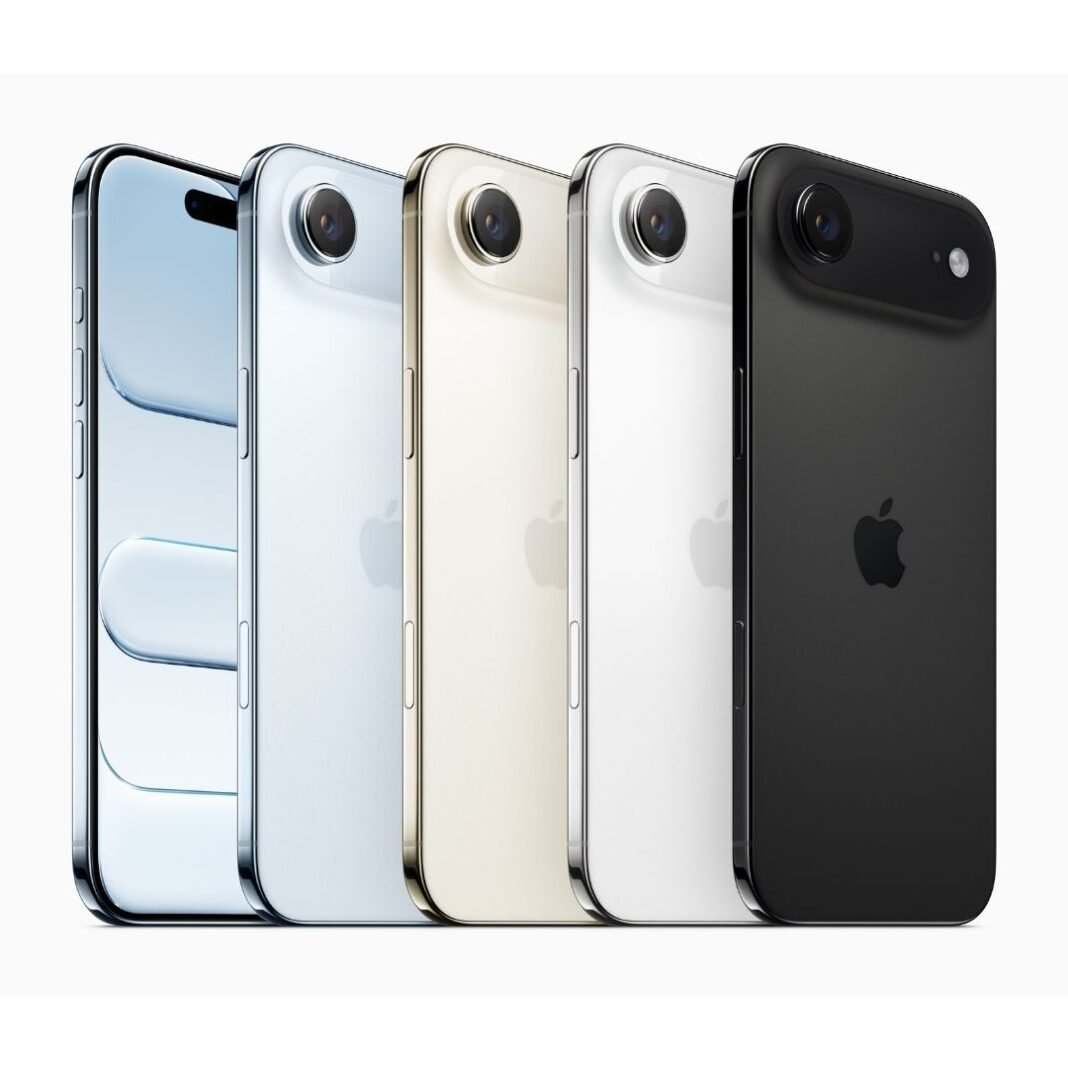Yesterday, Apple pulled back the curtain on one of its most ambitious iPhone designs in years: the iPhone Air. Dubbed Apple’s “thinnest iPhone ever,” the Air sets its sights on combining premium performance with an ultra-slim profile. But design flair alone doesn’t always win the game — so let’s look closely at what this phone delivers, what it compromises, and whether it could find a big audience.
What’s New: Features & Innovations
Here’s what makes the iPhone Air stand out:
- Ultra-thin design: At just 5.6 mm thick and ~165 grams in weight, this is the slimmest iPhone Apple has produced.
- Premium build materials: Titanium frame, with “Ceramic Shield 2” on the front for improved scratch resistance, and enhanced durability on the back.
- Display: A 6.5-inch Super Retina XDR display with ProMotion / up to 120 Hz refresh rate. Bright enough for outdoor use.
- Processor & internals: Powered by the A19 Pro chip, plus Apple-designed N1 modem / networking chip. Claims of being efficient: Apple says battery life is “all-day” despite the thin frame.
- Cameras: Rear is a 48 MP Fusion main camera; front is 18 MP Center Stage for selfies, video calls.
- Other notable points:
- No physical SIM slot in many markets — eSIM only. This helps save space.
- Available in four finishes: Space Black, Cloud White, Light Gold, Sky Blue.
- Pricing starts at USD $999 for the base model.
Trade-Offs & Potential Weaknesses
Every design has compromises. Some of the possible downsides:
- Battery capacity & life: While Apple promises all-day usage, a 5.6 mm thin frame doesn’t leave much room for large batteries. In heavy usage, it might lag behind thicker phones.
- Camera optics limitations: Though a strong 48 MP main camera, there are hints that ultra-wide, telephoto, or optional multiple lens systems might be less versatile compared to “Pro” models. Some users criticize the simplicity of the camera setup.
- Durability vs thinness trade-offs: Thin devices are more fragile, especially under drops or pressure. Apple’s use of titanium and better Ceramic Shield helps, but in real life risks remain.
- Price: At $999 for a base model, it overlaps somewhat with higher-end phones. Some may feel the premium for thinness is too steep if they don’t care about design that much.
- Feature set vs Pro models: Some features reserved only for Pro or Pro Max models (zoom, some camera capabilities, maybe battery life under heavy load) may push serious power users away.
Market Positioning & What It Means
Apple seems to be positioning the iPhone Air as a sweet spot between style/design lovers and those who want a powerful iPhone but don’t need all the “Pro” camera bells and whistles. It replaces the “Plus” line in some sense, offering large size (6.5-inch) but thinner, lighter, more elegant.
For many users, weight, feel in hand, aesthetics matter a lot. There may be a segment who have held off on upgrading because phones have become bulky. For them, the Air might be very appealing. On the other hand, power users who want camera versatility, long video recording, heavy gaming, or long battery life during travel or outdoor work may still prefer the Pro / Pro Max models.
Will the iPhone Air Be a Success?
On balance, the iPhone Air has strong potential. Its innovations are real, especially the slimness and build design, which have always been something Apple can use to differentiate. If Apple delivers on its battery claims in real life (not just labs), ensures durability, and pricing is reasonable in various global markets, I expect it to be well received in its niche.
However, it’s probably not going to unseat the Pro / Pro Max models among users who demand the best specs. Also, who knows how it will perform in markets where price sensitivity is very high. If, for example, in countries like Pakistan the import tax, availability, and price bump are steep, it may be less competitive compared to strong Android rivals that offer more camera lenses, bigger batteries, etc., for less money.
So, what do you think — will this new variant — the iPhone Air — be a success or not?



